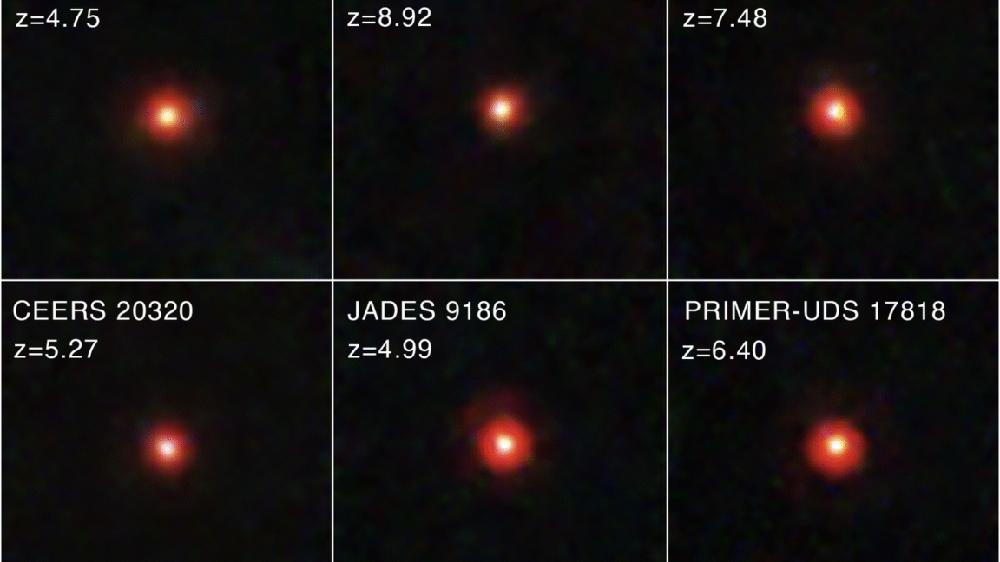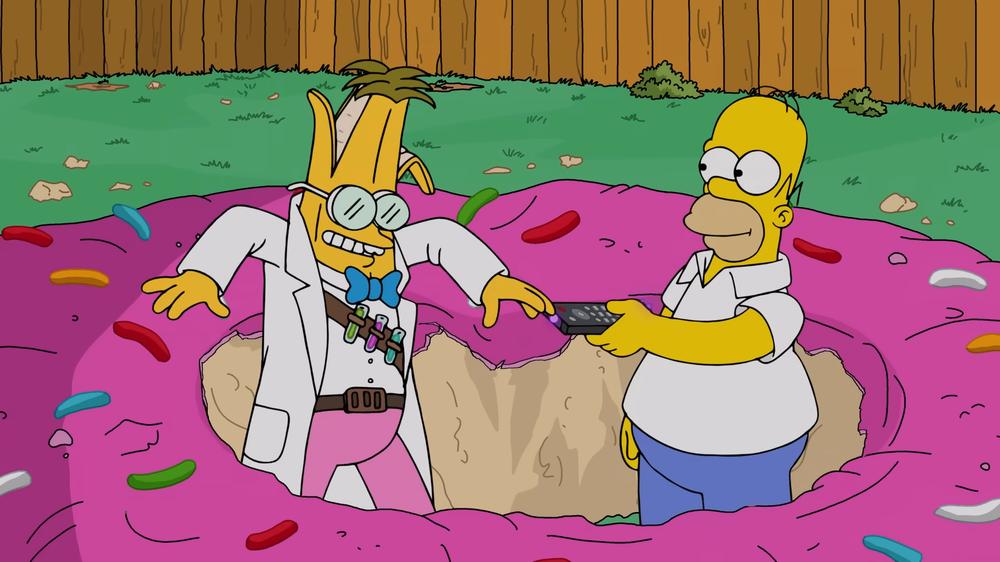A new simulation could help solve one of astronomy’s longstanding mysteries—how supermassive black holes formed so rapidly—along with a new one: What are the James Webb Space Telescope’s (JWST) “little red dots?”
Invisible leviathans lurk at the cores of nearly all of the 2 trillion or so galaxies strewn throughout space-time. Monster black holes entered the cosmic scene soon after the Universe’s birth and grew rapidly, reaching millions or even billions of times the Sun’s mass in less than a billion years. Astronomers have long wondered how these supermassive black holes could have grown so hefty in such little time.
The monster black hole mystery became even more perplexing in 2022 when “little red dots” were spotted at the far edges of space. When these tiny scarlet orbs began unexpectedly popping up in JWST images of the distant Universe, their nature was hotly debated. Now that scientists have amassed a sample of hundreds of them, many think the dots are growing supermassive black holes.
The problem is that they appear even earlier than astronomers thought possible, making the challenge of explaining early supermassive black holes even harder. Observations suggest that the little red dots mainly flickered on when the Universe was around 600 million years old and fizzled out within the next billion years (the supermassive black holes linger to the present time, but they no longer light up as little red dots).
A new study tries to explain the early formation of these immense objects via swelling swarms of stars.
Missing link
Many people thought it would violate the laws of physics for monster black holes to form so quickly. But a new study explains how colliding clusters of stars could have given rise to supermassive black holes within the Universe’s first several hundred million years—no new physics required.
“Right now, there are three main ideas for how supermassive black hole seeds form: direct collapse from gas clouds, remnants of the first stars, and dense star clusters,” said Fred Garcia, a graduate student at Columbia University who led the study. “Our work really supports the last case, where dense clusters evolve and their centers collapse to make intermediate-mass black hole seeds.”
The researchers used cosmological simulations to recreate the first 700 million years of cosmic history, focusing on the formation of a single dwarf galaxy. In their virtual galaxy, waves of stars were born in short, explosive bursts as cold gas clouds collapsed inside a dark matter halo. Instead of a single starburst episode followed by a steady drizzle of star formation as Garcia expected, there were two major rounds of stellar birth. Whole swarms of stars flared to life like Christmas tree lights.
“The early Universe was an incredibly crowded place,” Garcia said. “Gas clouds were denser, stars formed faster, and in those environments, it’s natural for gravity to gather stars into these tightly bound systems.”
Those clusters started out scattered around the galaxy but fell in toward the center like water swirling down a drain. Once there, they merged to create one megacluster, called a nuclear star cluster (so named because it lies at the nucleus of the galaxy). The young galactic heart shone with the light of a million suns and may have set the stage for a supermassive black hole to form.
A seemingly simple tweak was needed to make the simulation more precise than previous ones. “Most simulations simplify things to make calculations more practical, but then you sacrifice realism,” Garcia said. “We used an improved model that allowed star formation to vary depending on local conditions rather than just go at a constant rate like with previous models.”
Using the University of Maryland’s supercomputing facility Zaratan, Garcia accomplished in six months what would have taken 12 years on a MacBook.
Some clouds converted as much as 80 percent of their gas into stars—a ferocious rate compared to the two percent typically seen in nearby galaxies today. The clouds sparkled to life, becoming clusters of newborn stars held together by their mutual gravity and lighting a new pathway for supermassive black holes to form extremely early in the universe.
Chicken or egg?
Most galaxies, including our own, are anchored by a nuclear star cluster nestled around a supermassive black hole. But the connection between the two has been a bit murky—did the monster black hole form and then draw stars close, or did the cluster itself give rise to the black hole?
The simulation supports the latter hypothesis. Eventually, many stars in the superdense cluster detonated and left behind black holes, which then sank even farther into the heart of the galaxy.
“All the stellar-mass black holes that migrate to the center of the stellar cluster eventually form their own incredibly dense, gravitationally bound cluster within the larger nuclear star cluster,” said Matías Liempi Gonzalez, a PhD candidate at the Sapienza University of Rome, who was not involved in the study. “Within this dense ‘dark core,’ the black holes are so close together that mergers become unavoidable. A black hole merges with another, the (now larger) new black hole merges with a third, and so on.” Gonzalez said this runaway black hole merger process could lead to a supermassive black hole embryo.
The findings validate previous theoretical work. “It’s very promising to see the properties of these dense nuclear star clusters that the authors report forming at very early cosmic epochs,” said Priyamvada Natarajan, a theoretical astrophysicist at Yale University who was not involved in the simulation. Natarajan previously coauthored a separate paper that suggested supermassive black holes could have formed so quickly partly by slurping up cold gas within nuclear star clusters. “These could definitely serve as incubators for the formation and rapid growth of black hole seeds as we proposed theoretically in 2014.”
The simulation may also help explain some of JWST’s surprising observations, like packs of star clusters found just 460 and 600 million years after the Universe was born, respectively. Future observations could more clearly link early star clusters to supermassive black holes and little red dots.
“This very exciting simulation work is going to permit direct comparison with JWST data in the coming years,” Natarajan said. The ESA-led mission LISA, which would put a gravitational wave detector in space, could even detect these black holes merging in early nuclear star clusters. Combining observations from different missions could soon reveal the full story of how the earliest lights in the cosmos forged its darkest giants.
The Open Journal of Astrophysics, 2025. DOI: 10.33232/001c.145064
Ashley writes about space for a contractor for NASA’s Goddard Space Flight Center and freelances as an environmental writer. She holds master’s degrees in space studies from the University of North Dakota and science writing from Johns Hopkins University. She writes most of her articles with one of her toddlers on her lap.

 Acquisto auto usata, carVertical aiuta a evitare le fregature: la nuova offerta
Acquisto auto usata, carVertical aiuta a evitare le fregature: la nuova offerta